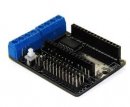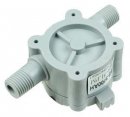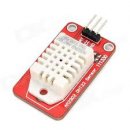Wireless Temperature Sensor
There doesn't seem to be as many DIYer's around now as there used to be 10-15 years ago but hopefully someone will learn something from this thread :)
Following on from the introduction to the ESP8266 WiFi module provided by @Rob here I thought it was time to demonstrate a practical example of what it can do.
This is not a particularly difficult DIY project, and it could be made a little easier which I will cover in a future post. I will detail all of the hardware required and will also provide all the software, or sketch in Arduino speak, although I must admit that most of the coding, in part, was already available elsewhere on the internet. Most of my time has been spent finding the cheapest way to manage the sensor readings.
So, what does it do?
This will be a relatively simple temperature sensor that connects to your home WiFi network and, not surprisingly, measures the temperature of your water. It has also been designed to do various things if the temperature is outside of predetermined limits.
In summary :
Following on from the introduction to the ESP8266 WiFi module provided by @Rob here I thought it was time to demonstrate a practical example of what it can do.
This is not a particularly difficult DIY project, and it could be made a little easier which I will cover in a future post. I will detail all of the hardware required and will also provide all the software, or sketch in Arduino speak, although I must admit that most of the coding, in part, was already available elsewhere on the internet. Most of my time has been spent finding the cheapest way to manage the sensor readings.
So, what does it do?
This will be a relatively simple temperature sensor that connects to your home WiFi network and, not surprisingly, measures the temperature of your water. It has also been designed to do various things if the temperature is outside of predetermined limits.
In summary :
- it can serve a basic webpage to display the current temperature - this can be viewed on any device connected to your home network and be updated at a predetermined time frame i.e. every 30 seconds
- it can send the data to a third party website which can store the data and be viewed from any device connected to the internet
- it can send an email and/or an SMS if a specific event occurs i.e. the temperature falls below a predetermined level
- it can save the data to a spreadsheet for future analysis



